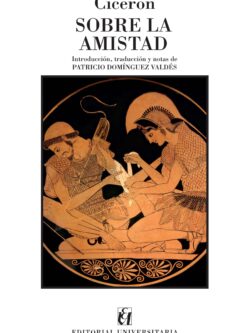Notre-dame de París
Una de las obras maestras de Victor Hugo. Notre-Dame de París cuenta la historia de la gitana Esmeralda, quien en compañía de su cabra Djali toca la pandereta y baila en las calles de París para subsistir, hasta que se la acusa de haber asesinado al capitán Phoebus, su amado, y se la condena a la horca. Sin embargo, el jorobado Quasimodo, campanero de Notre-Dame, quien tras su deformidad esconde un corazón sensible y sediento de amor, luchará para salvar a la gitana. Recreación del mito de la bella y la bestia y uno de los monumentos de la literatura francesa, Notre-Dame de París es una historia verdaderamente inmortal. La presente edición se abre con un estudio escrito por el que fue uno de los más reconocidos expertos en la obra de Victor Hugo, el crítico literario y profesor francés Jacques Seebacher. Además de contar con la reciente traducción de Teresa Clavel, el volumen incluye una cronología sobre el autor. «Era indefinible y encantadora; algo puro, sonoro, etéreo, alado, por así decirlo. Charles Baudelaire dijo…«Ningún artista es más universal que él. ENGLISH DESCRIPTION More commonly known as The Hunchback of Notre-Dame, Victor Hugo’s Romantic novel of dark passions and unrequited love, Notre-Dame de Paris, is translated with an introduction by John Sturrock in Penguin Classics. In the vaulted Gothic towers of Notre-Dame Cathedral lives Quasimodo, the hunchbacked bellringer. Mocked and shunned for his appearance, he is pitied only by Esmerelda, a beautiful gypsy dancer to whom he becomes completely devoted. Esmerelda, however, has also attracted the attention of the sinister archdeacon Claude Frollo, and when she rejects his lecherous approaches, Frollo hatches a plot to destroy her, that only Quasimodo can prevent. Victor Hugo’s sensational, evocative novel brings life to the medieval Paris he loved, and mourns its passing in one of the greatest historical romances of the nineteenth century. John Sturrock’s clear, contemporary translation is accompanied by an introduction discussing it as a passionate novel of ideas, written in defence of Gothic architecture and of a burgeoning democracy, and demonstrating that an ugly exterior can conceal moral beauty. This revised edition also includes further reading and a chronology of Hugo’s life. Victor Hugo (1802-85) was a forceful and prolific writer. He wrote volumes of criticism, Romantic costume dramas, lyrical and satirical verse and political journalism but is best remembered for his novels, especially Notre-Dame de Paris (1831) and Les Miserables (1862) which was adapted into one of the most successful musicals of all time. Though exiled to the Channel Islands by Napoleon III, Hugo returned to Paris in 1870 and remained a great public figure until his death: his body lay in state under the Arc de Triomphe, and he was later buried in the Panthéon. If you enjoyed Notre-Dame de Paris, you might like Gaston Leroux’s The Phantom of the Opera. ‘A great writer – inventive, witty, sly, innovatory’ A. S. Byatt, author of Possession
$16.000
Sin existencias





